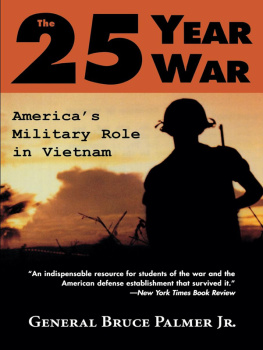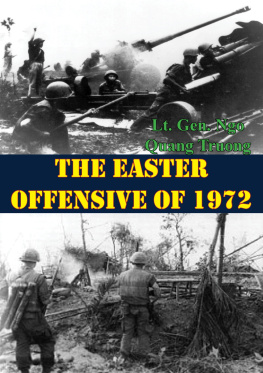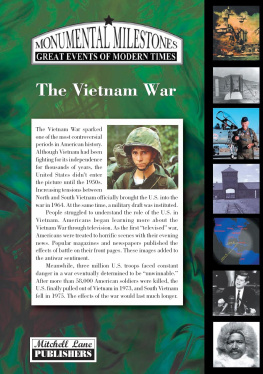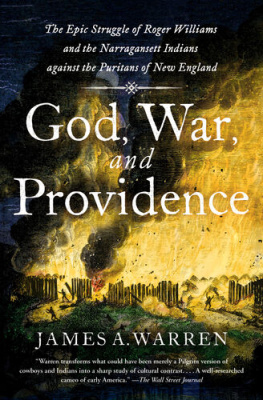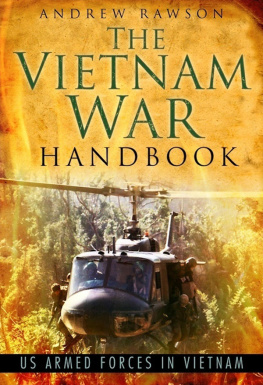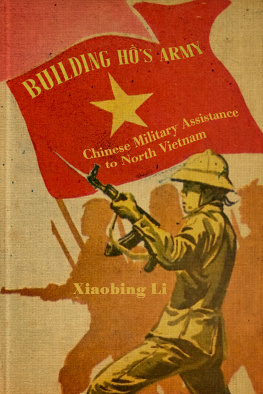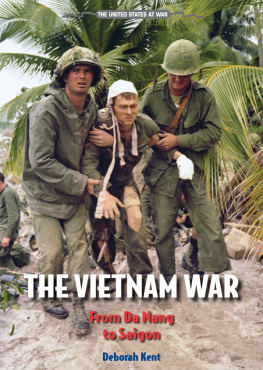
The 25-Year War
Americas Military Role in Vietnam
GENERAL BRUCE PALMER, Jr.
THE UNIVERSITY PRESS OF KENTUCKY
Publication of this volume was made possible in part by a grant from the National Endowment for the Humanities.
Copyright 1984 by The University Press of Kentucky
Scholarly publisher for the Commonwealth,
serving Bellarmine University, Berea College, Centre
College of Kentucky, Eastern Kentucky University,
The Filson Historical Society, Georgetown College,
Kentucky Historical Society, Kentucky State University,
Morehead State University, Murray State University,
Northern Kentucky University, Transylvania University,
University of Kentucky, University of Louisville,
and Western Kentucky University.
All rights reserved.
Editorial and Sales Offices: The University Press of Kentucky
663 South Limestone Street, Lexington, Kentucky 405084008
06 05 04 03 02 5 4 3 2 1
Library of Congress Cataloging-in-Publication Data
Palmer, Bruce, 1913
The 25-year war.
Bibliography: p.
Includes index.
1. Vietnamese Conflict, 19611975United States.
I. Title. II. Tide: Twenty-five year war.
DS558.P337 1984 959.7043 84-5091
ISBN 0-8131-1513-2
ISBN 0-8131-9036-3 (paper)
This book is printed on acid-free recycled paper meeting the requirements of the American National Standard for Permanence in Paper for Printed Library Materials.

Manufactured in the United States of America.
Contents


To my wife, Kay Sibert,
and our children, Robin Helen,
Maurene Elizabeth, and Bruce III,
who knew full well the life
of a military family
And to the men and women
who served in Indochina
on the side of the Free World
Preface
Exactly twenty-five years from 1 May 1950the day President Truman authorized the first U.S. military assistance to IndochinaSaigon and the South Vietnamese government fell to the communist regime of North Vietnam, on 30 April 1975. Thus ended the longest conflict in American history.
After every prolonged conflict in its experience, the United States has plunged into a period of assessment, trying to sift out the meaning of the memorable events of the recent past while searching for the key to a conflict-free future. This happened in the 1870s after our Civil War, in the 1920s after World War I, and for a relatively brief period in the late 1940s after World War II. But with the advent of the Cold War in 1947, followed by the Korean War in 1950our first experience with limited warwe lived through over a quarter of a century during which the United States was continuously involved in some sort of emergency, contingency, or actual hostilities somewhere in the world. And so, after our agonizing experience in Vietnam, the first clear failure in our history, it is not surprising to find the United States of the 1970s and 1980s brooding over its frustrations and reevaluating its role in the world.
Vietnam, Laos, and Cambodia (the whole peninsula of Indochina) present a puzzling picture, enigmatic to most foreigners and especially so to Americans. The very name Vietnam evokes deep emotions and bitter memories in our countrymen. But the tendency to blame Vietnam for all our domestic ills has no foundation in fact. The problems of urban decay, racial disharmony, drug abuse, and all the rest were bound to plague us, whether or not we became involved in Vietnam. Indeed, one can argue that in the 1950s, well before we became heavily committed in Vietnam, a sense of national direction and purpose appeared to be lacking in the United States.
This book looks at the Vietnam War from the perspective of a senior military professional who held important positions of responsibility during the conflict. Among other things, I will seek to bring out the lessons we have learned or should have learned from the war, and their implications for the future. The severe impact of the war on our armed forces and its almost disastrous effect on the U.S. Army will receive special treatment.
The focus of this book is not on the fightingbloody, uncompromising, and frustratingnor is it on the dauntless American men and women who served in the operational areas. It is rather on the higher levels of the conflict, including the strategic crossroads of the political and the military. It will also show how the war was conducted in the theater of operations and will bring out the cumulative effects of our military policies on our defense establishment.
Critical remarks in this book may reflect on the top leaders, civilian and military, who made the key decisions affecting the direction and conduct of the war, as well as on commanders in the field, but not on the fighting men who carried out their orders. No nation was ever blessed with more stouthearted men than the Americans who fought and died in southeast Asia. What is even more extraordinary is that the overwhelming majority remained loyal and continued to fight for months and even years after it was clear that our leaders and people at home were deeply divided.
We could beg many questions by simply concluding that the United States should not have intervened in Indochina in any manner whatever. But of course we did intervene, and the president, other civilian leaders, and military leaders at the time of those earlier, fateful decisions generally agreed that it was the right thing for the United States to do. Our government, itself lacking a clear understanding of what it means and what it takes to commit a nation to war, failed to persuade the public that it was necessary for us to fight in Vietnam. This was a fatal weakness, and as a result of it the American people did not lend their wholehearted support to the war effort. This might have been obtained had the Congress been deeply involved in the decision to commit our forces to battle and been persuaded that a declaration of war was in the national interest. But this was not the case. Rather, the president unilaterally committed the nation to war without real congressional backing. A confused American people could not even dimly grasp the reasons why we were fighting in a little-known region halfway around the world. Nevertheless, our motives and objectives as a government were straightforward and devoid of territorial ambitions or self-aggrandizement.
True, we made mistakes in Vietnam, but by and large they were honest mistakes, and many were mistakes only in hindsight. Calling something a mistake is, of course, an exercise of personal opinion and can set off controversy. Significant mistakes, nevertheless, will be pointed out, but with no intent to place the blame for them on any particular individuals.
After a prologue addressing the early years of U.S. involvement in Vietnam, 195063, this book covers generally the period from President Diems assassination in Vietnam in November 1963 to the fall of Saigon in April 1975. Part I examines various stages and major aspects of the war during this period, while Part II assesses the performance of our troops and our conduct of the war, concluding with a discussion of the larger lessons to be learned from the war.
Next page
